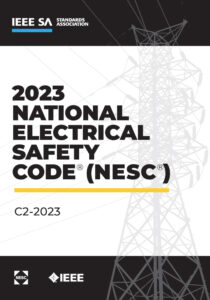New York Recognizes Essential Role of Utility Workers
 After a years-long campaign, members of Local 1-2 in New York finally achieved official legal recognition as essential workers. New York law now acknowledges that utility workers play a critical role in emergency preparedness and response and, as such, exempts certain utility and other workers from travel bans during declared emergencies. Some communities have experienced long-term power and communications outages during storms in no small part because utility personnel were barred from physically accessing the electric and communications infrastructure that needed repair. This new law will add statewide clarity, uniformity, and general permission for utility and other workers to travel to and from disaster areas in order to restore power and communications and provide maintenance services.
After a years-long campaign, members of Local 1-2 in New York finally achieved official legal recognition as essential workers. New York law now acknowledges that utility workers play a critical role in emergency preparedness and response and, as such, exempts certain utility and other workers from travel bans during declared emergencies. Some communities have experienced long-term power and communications outages during storms in no small part because utility personnel were barred from physically accessing the electric and communications infrastructure that needed repair. This new law will add statewide clarity, uniformity, and general permission for utility and other workers to travel to and from disaster areas in order to restore power and communications and provide maintenance services.
Local 1-2 members had been working on this legislation for at least 10 years, but it had been repeatedly vetoed. This recognition is long overdue, and I congratulate all involved on this hard-fought victory!
NESC Updated
The latest edition of the National Electrical Safety Code (NESC) was released in August 2022 and became effective on February 1, 2023. The standards are developed by the Institute of Electrical and Electronics Engineers (IEEE) and are updated every five years. It’s your employer’s responsibility to make sure you have access to the latest standards, so if you haven’t seen them, ask for them.
 The NESC specifies best practices for the safety of electric supply and communication utility systems at both public and private utilities. The NESC sets the ground rules and guidelines for practical safeguarding of workers and the public during the installation, operation, or maintenance of power, telephone, cable TV, and railroad signal systems.
The NESC specifies best practices for the safety of electric supply and communication utility systems at both public and private utilities. The NESC sets the ground rules and guidelines for practical safeguarding of workers and the public during the installation, operation, or maintenance of power, telephone, cable TV, and railroad signal systems.
The NESC is the consensus safety document for electric utilities. It is seen as the minimum safety standard for electric utility workers and for protection of the public from electric utility facilities.
Each NESC revision considers changes for new and existing safety issues since the last revision. By continuously enhancing and revising safety standards over many decades, NESC has significantly decreased electric utility accidents.
Like previous versions, the 2023 edition will be available in digital, printed, e-learning, and mobile-app formats. This edition consists of initial sections covering scope, purpose, and grounding methods, followed by sections that include specific rules for electric supply stations, overhead lines, underground lines, and safety-related work practices.
Notable changes to the 2023 NESC include:
1) Significant revisions to Section 14 covering batteries, addressing new battery technologies, energy storage, and backup power.
2) A new Section 19 for photovoltaic generating stations that addresses general codes, location, grounding configurations, vegetation management, DC overcurrent protection, and DC conductors. These new rules accommodate large-scale solar power projects.
3) A requirement for radio frequency safety training and a new arc flash table for medium voltage switchgear and horizontally racked breakers.
Make sure you are working with the new, up-to-date set of standards in your workplace. More information is available at the IEEE’s website: https://standards.ieee.org.

